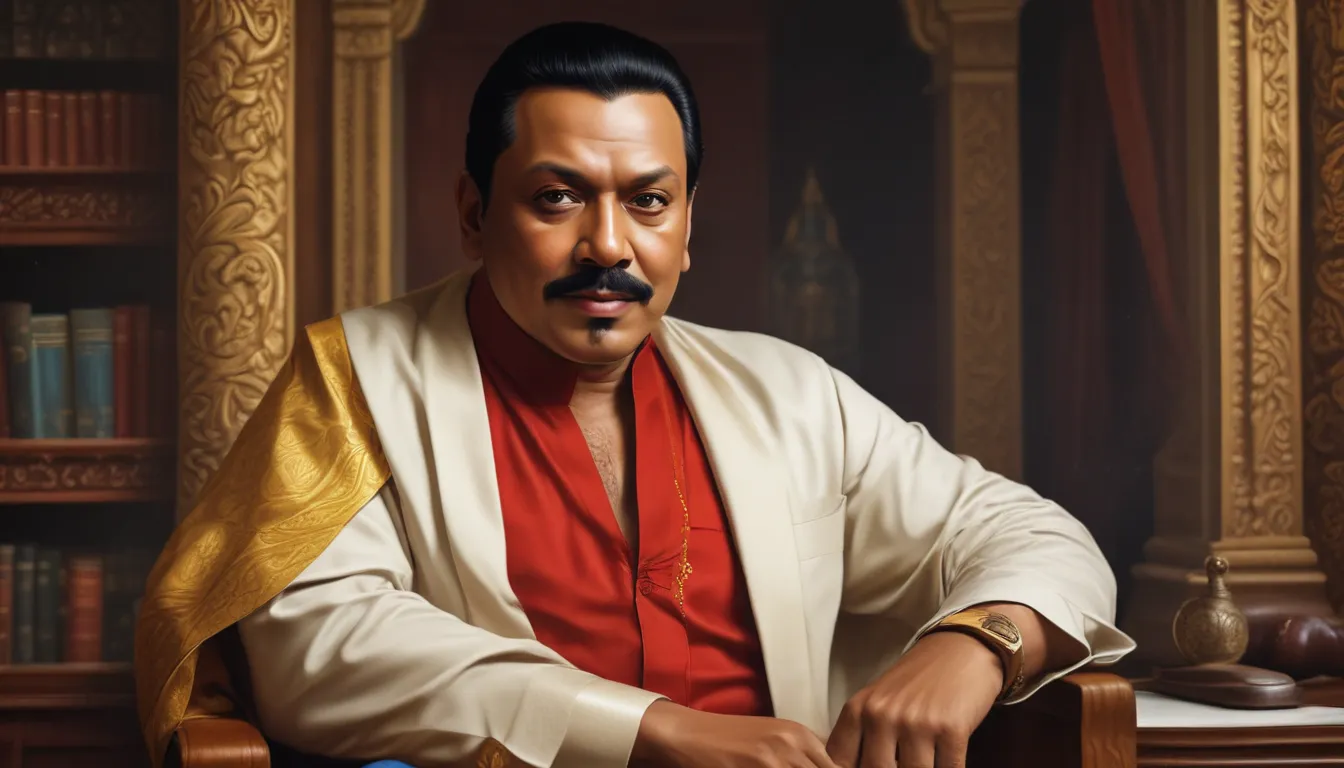The images in our articles may not match the content exactly. They are used to grab your attention, not to show the exact details in the text. The images complement the text but do not replace it.
Welcome to the intriguing world of Mahinda Rajapaksa, the former President of Sri Lanka whose legacy continues to shape the country’s socio-political landscape. Known for his charismatic leadership, controversial policies, and pivotal role in ending the Sri Lankan Civil War, Rajapaksa is a figure who elicits both admiration and criticism. Join us as we explore 13 mind-blowing facts about Mahinda Rajapaksa that offer a comprehensive look into his life, career, and influence on Sri Lanka.
The Decade-Long Presidency
Mahinda Rajapaksa served as the President of Sri Lanka from 2005 to 2015, making him one of the longest-serving presidents in the country’s history. His tenure was characterized by a mix of accolades and controversies, showcasing his dynamic impact on Sri Lankan politics.
The End of the Civil War
Rajapaksa played a pivotal role in bringing an end to the Sri Lankan Civil War by overseeing the military campaign that defeated the Liberation Tigers of Tamil Eelam (LTTE). This accomplishment earned him both international praise and criticism, highlighting the complexities of his leadership.
Infrastructure Development Champion
Under his leadership, Sri Lanka witnessed a surge in infrastructure development, including the construction of highways, ports, and airports. Rajapaksa’s ambitious push for development aimed to boost the country’s economy and enhance connectivity, shaping the nation’s physical landscape.
Social Welfare Initiatives
Rajapaksa implemented various social welfare programs aimed at supporting marginalized communities. From subsidies for essential commodities to housing schemes and healthcare reforms, these initiatives underscored his commitment to addressing the needs of the most vulnerable in society.
Allegations of Human Rights Abuses
During the final stages of the civil war, allegations of human rights violations and war crimes surfaced, casting a shadow over Rajapaksa’s administration. The controversy surrounding these accusations drew international scrutiny and fueled debates about his approach to governance.
Political Affiliation and Family Legacy
Affiliated with the Sri Lanka Podujana Peramuna (SLPP) party, Rajapaksa hails from a prominent political family. With his father being a renowned politician and several siblings holding political positions, his familial ties have played a significant role in shaping his political journey.
A Polarizing Figure
Despite facing allegations of corruption and criticism for his policies, Rajapaksa enjoys a significant following in Sri Lanka. His nationalist stance, stability efforts, and leadership qualities have earned him a loyal base of supporters, highlighting the diverse perceptions of his political persona.
The Comeback Story
After a setback in the 2015 presidential election, Rajapaksa staged a remarkable political comeback by winning a seat in parliament in the 2020 general election. This resurgence further solidified his influence in Sri Lankan politics, showcasing his resilience and enduring impact.
The Charismatic Leader
Known for his charismatic and authoritative leadership style, Rajapaksa has captivated both admirers and critics throughout his political career. His ability to rally support and navigate complex challenges has defined his legacy as a compelling political figure.
Regional and International Engagement
Rajapaksa’s involvement in regional and international affairs has been notable, with contributions to initiatives like the Belt and Road Initiative and diplomatic relations with key countries. His strategic approach to foreign policy underscores his broader impact beyond Sri Lanka’s borders.
The Controversial Journey
From the civil war to allegations of corruption and human rights abuses, Mahinda Rajapaksa’s political journey has been rife with controversy. These challenges have shaped his legacy and sparked debates about the complexities of governance and leadership in Sri Lanka.
Unraveling the Enigma
In conclusion, Mahinda Rajapaksa emerges as a multifaceted figure whose impact on Sri Lankan politics transcends conventional narratives. Whether celebrated or critiqued, his legacy continues to resonate in the nation’s political fabric, inviting nuanced reflections on power, governance, and public perception.
FAQs
-
Who is Mahinda Rajapaksa?
Mahinda Rajapaksa is a Sri Lankan politician who served as the President of Sri Lanka from 2005 to 2015. Known for his leadership during the civil war and infrastructure development initiatives, he is a prominent figure in the country’s political landscape. -
What are some intriguing facts about Mahinda Rajapaksa?
- Mahinda Rajapaksa was previously the Prime Minister of Sri Lanka before assuming the presidency.
- A passionate cricket enthusiast, Rajapaksa’s early years saw him actively involved in the sport.
-
Rajapaksa’s commitment to infrastructure development has been a hallmark of his political career, shaping Sri Lanka’s modernization efforts.
-
What controversies surround Mahinda Rajapaksa?
Rajapaksa’s tenure as President was marred by allegations of human rights abuses, corruption, and authoritarian tendencies. These controversies have sparked debate and scrutiny over his governance approach. -
What role did Rajapaksa play in the Sri Lankan civil war?
As President, Mahinda Rajapaksa led the Sri Lankan armed forces in the campaign against the Tamil Tigers, ultimately achieving victory and ending the prolonged conflict. His role in the war remains a significant aspect of his political legacy. -
How has Mahinda Rajapaksa influenced Sri Lankan politics?
Rajapaksa’s impact on Sri Lankan politics is profound, characterized by his charismatic leadership, controversial policies, and enduring presence in the national discourse. His contributions have shaped the country’s trajectory and continue to evoke diverse reactions among the public.
In delving into the captivating world of Mahinda Rajapaksa, we unravel the complexities of his political journey, shedding light on the nuances of power, influence, and public perception in Sri Lanka. Join us in exploring the enigmatic persona of this influential figure, whose legacy reverberates through the corridors of the nation’s history.






